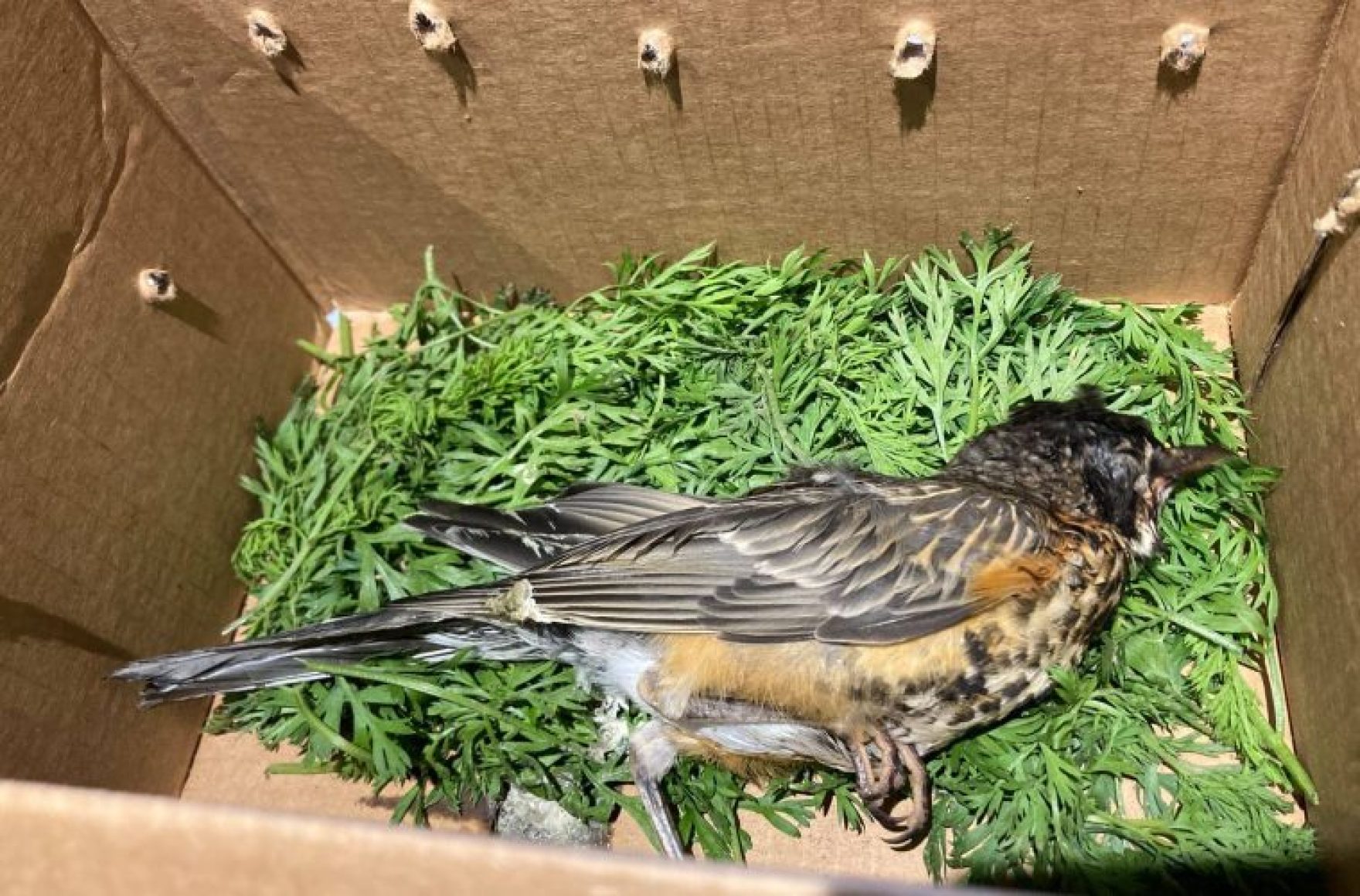Reports Of Mysterious Bird Disease Decreasing In Pennsylvania
Notices of an alarming illness causing swollen eyes and death among songbirds in the mid-Atlantic to Indiana are on the decline.

This story by Julia Zenkevich was originally published on 90.5 WESA in Pittsburgh, Pennsylvania on August 3, 2021.
Cases of a mysterious bird disease have been declining, according to the Audubon Society of Western Pennsylvania.
The group has been aggregating information and reports about the disease since July, when the Pennsylvania Game Commission first alerted the public to the issue. Jim Bonner, the executive director of the Audubon Society of Western Pennsylvania, said in July that the society received dozens of calls about potential cases each day. Now they get only two or three calls daily.
The illness seems to have affected songbirds, like the blue jay, American robin and red-bellied woodpecker. Symptoms include crusty eyes and neurological effects, such as head tremors and difficulty standing. Concern about the disease spiked over the July 4 holiday weekend when researchers heard of over 1,000 potential cases statewide.
Bonner said reports to other groups have slowed as well.
“Several of the sources we’ve been tracking have been reporting a decreasing number of reports in recent days and weeks,” he said. Wildlife services in other states, including Maryland, Virginia, and Delaware, have also had fewer reports.
Bonner noted that the University of Pennsylvania’s Wildlife Futures Program, which has been tracking cases of the disease, plans to close their online reporting form by Aug. 15, “unless there’s a significant uptick in reports before then.” He said the disease struck in waves that seem to be weakening.
“Things tend to ripple and spread, so you have an area where you get a lot of cases, another where they seem to drop down, and this seemed to have followed a very similar progression,” he said. “When you don’t know the cause it’s always dangerous to guess if it’s been resolved, but it certainly seems to be trending that way.”
Researchers have not identified the cause of the disease, though they have ruled out some explanations, like West Nile virus, salmonella, and avian influenza, and Newcastle disease.
According to Bonner, it could take a while for researchers to find a satisfactory answer to their questions.
“Unfortunately, they may not be able to ever truly identify what it is, or it may be sometime years from now when someone’s looking at a sample that they’ve saved, they discover something new through a new technique,” he said. “I think the toughest thing is we all want an answer, and we all want an answer as soon as possible, and sometimes we just can’t get that.”
Both the Audubon Society and the state Game Commission recommend that people keep their bird feeders and bird baths inside until further notice to prevent potential spread of the illness. Bonner said the society will reevaluate this guideline in the next few weeks.
Julia Zenkevich is a general assignment reporter for 90.5 WESA. She’s a life-long Pittsburgher, and attended the University of Pittsburgh.